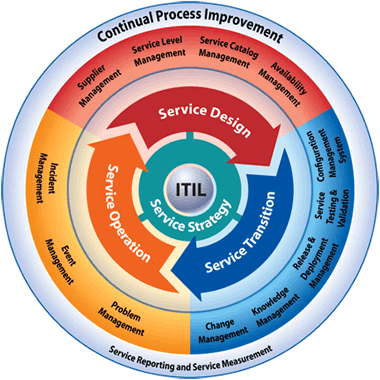Management of the HGC 24/7 first and second tier support team
An event may indicate that something is not functioning correctly, leading to an incident being logged. Events may also indicate normal activity, or a need for routine intervention such as changing a tape. Event management depends on monitoring, but it is different. Event management generates and detects notifications, whilst monitoring checks the status of components even when no events are occurring. Events may be detected by a CI sending a message, or by a management tool polling the CI. After an event has been detected it may lead to an Incident, Problem or Change, or it may simply be logged in case the information is needed. Response to an event may be automated or may require manual intervention. If actions are needed then a trigger, such as an SMS message or an incident being automatically logged, can alert support staff.

Incident management aims to restore normal service operation as quickly as possible and minimise the adverse effect on business operations, thus ensuring that the best possible levels of service quality and availability are maintained. ‘Normal service operation’ is defined here as service operation within service-level agreement (SLA) limits. An incident is defined as an unplanned interruption to an IT service or a reduction in the quality of an IT service. Failure of a configuration item that has not yet impacted service is also an incident. For example, failure of one disk from a mirror set. An event which is not part of the standard operation of a service and which causes or may cause disruption to or a reduction in the quality of services and customer productivity.
The objective of incident management is to restore normal operations as quickly as possible with the least possible impact on either the business or the user, at a cost-effective price. The transformation between event-to-incident is the critical junction where Application Performance Management (APM) and ITIL come together to provide tangible value back to the business.
A service desk is deployed for the Service Operation and tasks include handling incidents and requests, and providing an interface for other ITSM processes. Features include: single point of contact (SPOC) and not necessarily the first point of contact (FPOC); single point of entry; single point of exit; easier for customers; streamlined communication channel. Primary purposes of a service desk include incident control: life-cycle management of all service requests; communication: keeping a customer informed of progress and advising on workarounds.